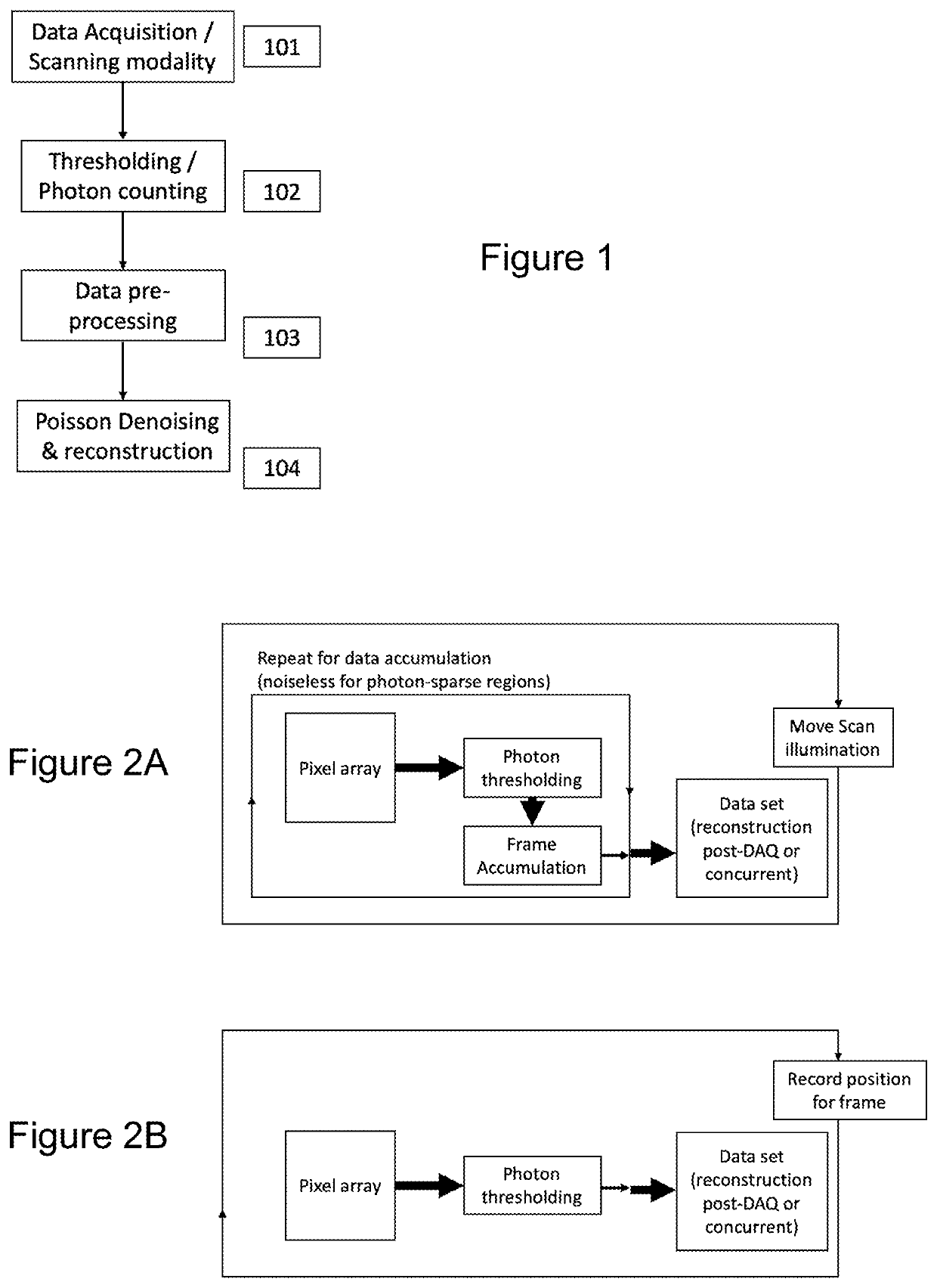Quantum-limited Extreme Ultraviolet Coherent Diffraction Imaging
a coherent diffraction and quantum-limited technology, applied in the field of quantum-limited extended ultraviolet (including xray) coherent diffraction imaging, can solve the problems of large impact of cdi techniques, severe limitation of imaging resolution, and often critical limitation of dose on the sample, and achieve the effect of improving accuracy
- Summary
- Abstract
- Description
- Claims
- Application Information
AI Technical Summary
Benefits of technology
Problems solved by technology
Method used
Image
Examples
Embodiment Construction
[0023]FIG. 1 is a flow diagram showing the overall process of quantum-limited extended ultraviolet coherent diffraction imaging according to the present invention. In step 101 data is acquired in a CDI configuration (see FIGS. 2A-D). In step 102, detector pixels are thresholded (see FIG. 3). In step 103, data preprocessing is performed (see FIG. 4). In step 104, the image is reconstructed. FIGS. 6-9 illustrate examples of data acquisition apparatus. Extended ultraviolet range has a wavelength of about 10 nm-200 nm or 10 nm-250 nm, while soft x-ray has a wavelength of about 1 nm-10 nm. Extended ultraviolet range includes extreme UV, generally defined as 10 nm-100 nm.
[0024]Various modalities of scanning and data acquisition may be performed in step 101. See FIGS. 2A-2D for examples of scanning and data acquisition modalities.
[0025]Thresholding of detector 615 pixels is performed in step 102. FIG. 3 illustrates an example of this process. A typical use of EUV imaging would be to detect...
PUM
 Login to View More
Login to View More Abstract
Description
Claims
Application Information
 Login to View More
Login to View More - R&D
- Intellectual Property
- Life Sciences
- Materials
- Tech Scout
- Unparalleled Data Quality
- Higher Quality Content
- 60% Fewer Hallucinations
Browse by: Latest US Patents, China's latest patents, Technical Efficacy Thesaurus, Application Domain, Technology Topic, Popular Technical Reports.
© 2025 PatSnap. All rights reserved.Legal|Privacy policy|Modern Slavery Act Transparency Statement|Sitemap|About US| Contact US: help@patsnap.com



